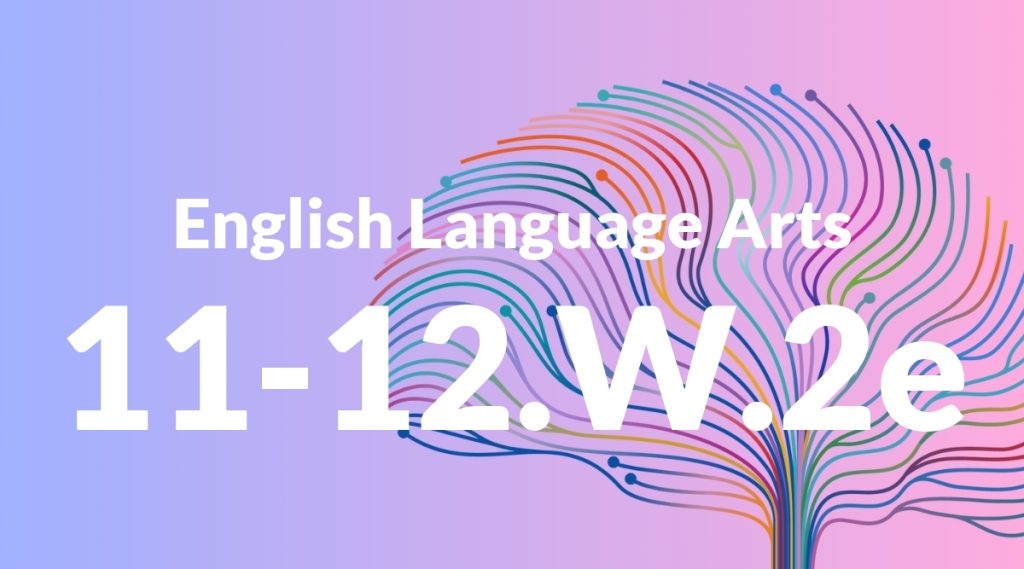Standard: 11-12.W.2 – Write informative/explanatory texts to examine and convey complex ideas, concepts, and information clearly and accurately through the effective selection, organization, and analysis of content.
Grade level: Grade 11-12
Subject: English Language Arts
Domain: Writing
Teacher Overview
This standard emphasizes the importance of writing informative and explanatory texts that convey complex ideas clearly and accurately. Mastery of this standard is crucial for students as it equips them with the skills needed to communicate effectively in both academic and professional settings. Students should have a solid grasp of basic writing techniques, including the ability to construct clear thesis statements, organize paragraphs logically, and use transitions effectively. They should also be adept at conducting research and citing sources.
After mastering this standard, students will be prepared to engage in more complex writing tasks, such as argumentative essays and research projects, and will be better equipped for college-level writing and professional communication.
Common Misconception 1
A common misconception is that informative writing is merely about listing facts. This is incorrect because effective informative writing requires not just the presentation of information but also the analysis and interpretation of that information to provide deeper insights.
Intervention 1
An evidence-based intervention for this misconception is to engage students in activities that require them to compare and contrast simple factual writing with analytical writing. This can include peer reviews and the use of rubrics that emphasize analysis.
Common Misconception 2
Another misconception is that the organization of content is secondary to the accuracy of the information. This is incorrect because a well-organized text enhances readability and comprehension, making it easier for the reader to follow the writer’s line of thought.
Intervention 2
To address this misconception, teachers can use graphic organizers and outline templates to help students plan their writing. Peer review sessions focusing on the organization can also be beneficial.
Prerequisite Knowledge
Students should have a foundational understanding of basic writing structures, such as thesis statements, paragraph organization, and transitions. They should also be familiar with research techniques and how to cite sources properly.
Subsequent Knowledge
After mastering this standard, students will be able to tackle more advanced writing tasks, such as persuasive and argumentative essays, and will be better prepared for college-level writing and professional communication.
Instructional Activities
- Research and write a detailed report on a current event.
- Create an informative brochure on a scientific topic.
- Write a step-by-step guide on how to perform a specific task.
- Develop a multimedia presentation that explains a complex concept.
- Participate in peer review sessions to critique and improve each other’s work.




